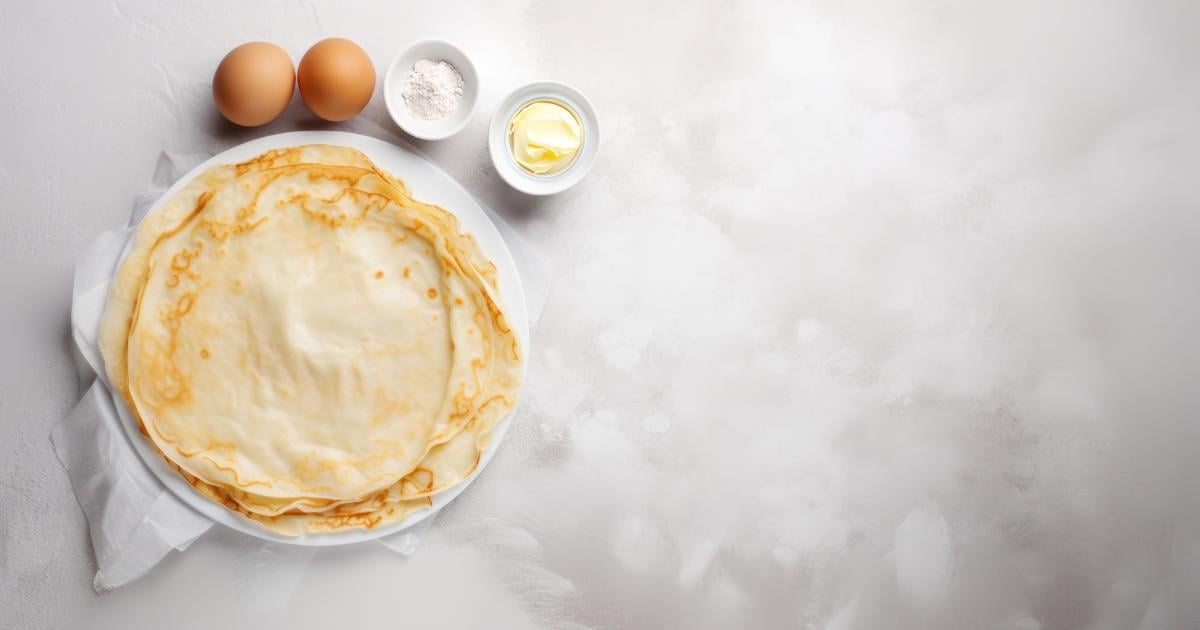
Suggested video What products are in season in February?
Video 1 of 2
The first pancake’s mission is to do the “crash test” for the rest of the batch. Thanks to it, we will be able to assess whether the temperature of the pan is too high or not enough or even add fat if there is a lack of it or remove it if there is too much. Because too much oil or butter can cause you to completely fail the pancakes. Professionals recommend using sunflower or grapeseed oil instead because they are neutral in taste and suitable for cooking. To apply it, put a little on a sheet of absorbent paper and place the material on the pan. You can also use a food brush, it’s more ecological. No need to repeat the operation between each pancake, only add more if the pancakes start to stick.
If your batter has difficulty spreading in the pan or if the pancake breaks when turning, there is probably a consistency problem and adjustments will need to be made. A batter that is too liquid can result in thin and fragile pancakes, so thicken it by adding a little flour. Gradually add it to your dough while mixing until the desired consistency is reached. Make sure to mix well to avoid lumps. You can also opt for starch to have lighter pancakes. If the dough is too thick, it will need to be thinned with liquid. Gradually add milk or water. Do this in small quantities to avoid making the dough too liquid all at once. Always remember to let the dough rest for a few minutes after these modifications so that the ingredients can incorporate well.
Source:https://www.750g.com/voici-pourquoi-la-premiere-crepe-que-vous-faites-cuire-est-toujours-ratee-a36371.htm


